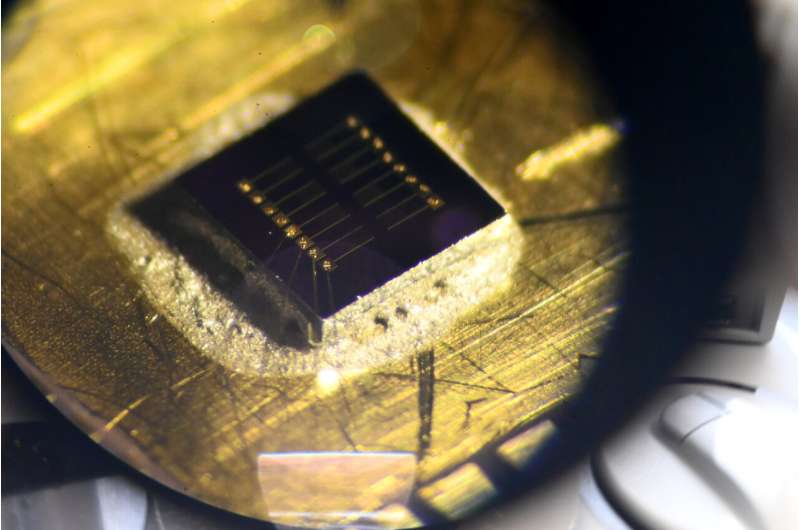Nanotubes, nanoparticles and antibodies detect tiny amounts of fentanyl

A research team at the University of Pittsburgh led by Alexander Star, a chemistry professor in the Kenneth P. Dietrich School of Arts and Sciences, has developed a fentanyl sensor that is six orders of magnitude more sensitive than any electrochemical sensor for the drug reported in the past five years. The portable sensor can also tell the difference between fentanyl and other opioids.
Their work is published in the journal Small.
Fentanyl is a synthetic opioid and one of the main drivers in overdose deaths in the United States, Star said. It’s often mixed with other drugs, but because of its potency, it is often present in such small amounts that it can be hard to detect.
Star’s sensor uses carbon nanotubes and gold nanoparticles to tell fentanyl apart from other opioids. The key to its groundbreaking sensitivity, however, is the incorporation of fentanyl antibodies. “We’re using nature’s invention, so to speak,” Star said. “That’s how we can reach these ultralow levels of detection.”
The sensor is a modified version of a COVID-19 sensor developed by Star’s research group in 2020. The COVID sensor is itself an adaptation of a THC breath test—similar to a Breathalyzer, but for marijuana—he developed in 2019.
At the core of each of these sensors is a chip with carbon nanotubes attached. Each tube is like a tiny wire that’s 100,000 times smaller than a human hair and effective at conducting electricity. Attached to the nanotubes are gold nanoparticles, each about 43 nanometers tall.
In practice, molecules of fentanyl bound to the nanoparticles, triggering a current that flowed through the nanotubes. Different substances created different currents; using machine learning, the sensor was able to identify a fentanyl molecule. It also had a 91% success rate when it came to differentiating fentanyl from other opioids, which is helpful when trying to determine whether another drug has been tainted with fentanyl.
To reach its unprecedented level of sensitivity, Star and his team took a cue from the COVID sensor and incorporated fentanyl antibodies, attaching them to the nanoparticles. Fentanyl molecules would tightly bind to any antibodies they encountered, changing the current flowing from the antibodies into the nanotubes, signaling the presence of the drug.
The result was a sensor that’s more sensitive than any electrochemical fentanyl sensor reported in the past five years. Star’s sensors detected fentanyl on the femtomolar scale. That’s 10-15 moles per liter. The next closest sensor can detect on the nanomolar scale, which is 10-9 moles per liter.
“Nature developed these selective receptors,” Star said. “We adapted them on our platform, the carbon nanotubes.”
In addition to its sensitivity, another benefit of Star’s sensor is its portability. To detect such small quantities of fentanyl today requires a mass spectrometer—not a particularly mobile technology. Star’s sensor is small enough to be hand-held and inexpensive enough to be practical.
In the future, he anticipates using this technique to develop a sensor array that can detect many kinds of drugs.
More information:
Wenting Shao et al, Machine Learning Discrimination and Ultrasensitive Detection of Fentanyl Using Gold Nanoparticle‐Decorated Carbon Nanotube‐Based Field‐Effect Transistor Sensors, Small (2024). DOI: 10.1002/smll.202311835
Journal information:
Small
Provided by
University of Pittsburgh
Citation:
Nanotubes, nanoparticles and antibodies detect tiny amounts of fentanyl (2024, May 2)
retrieved 2 May 2024
from https://phys.org/news/2024-05-nanotubes-nanoparticles-antibodies-tiny-amounts.html
This document is subject to copyright. Apart from any fair dealing for the purpose of private study or research, no
part may be reproduced without the written permission. The content is provided for information purposes only.

